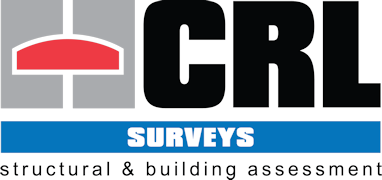CRL Surveys can sample structural materials to assess their compsition and condition, including mass and reinforced concrete, hardened mortar, iron & steel, paint and plaster as well as identifying any presence of asbestos.
Mass & Reinforced Concrete
Areas for diagnostic in-situ testing and sampling will be selected, on the basis of visual observations and, where appropriate, hammer testing, half-cell potential survey, measurements of resistivity and measurements of corrosion rate, to cover, as far as possible, the full extent of each portion /element of a structure and also to be representative of the extremes (both good and bad) and ranges of deterioration evident.
Sampling will be undertaken in representative Test Areas.
Drilled dust sampling:- Representative samples prepared, in accordance with Section 4.1 of BS EN 14629: 2007, for laboratory analysis for the contents of potentially aggressive agents, e.g. chloride ion, sulphate, alkali-metals and other, cast-in or ingressed, contaminants.
This procedure is covered by CRL Surveys UKAS Accreditation, UKAS Ref: 2728. For further details please visit www.ukas.com
Dust samples will then be submitted to a reputable, United Kingdom Accreditation Service (UKAS) Accredited Laboratory for analysis and testing.
Lump sampling of concrete:- In some instances the preparation of drilled dust or core samples may not either be possible or prudent. There may also be occasions where the removal of representative surface spalls for use as ‘lump’ samples may be considered as appropriate or worthy of consideration. However, we would point out that ‘lump’ samples could introduce errors, due to surface affects such as leaching and laitance, which should be factored-in.
The above referenced standards, and therefore our UKAS Accreditation, do not allow for this as an option and if we undertake this type of sampling we will provide justifications / reasoning and seek prior approval of the Customer.
The preparation of ‘lump’ samples will generally be limited to the prizing free and collection of spalled surfaces, comprising:
- at least 50g of material, but preferably greater than 100g and in 1 No. piece;
- material from a depth of at least 25mm and greater than the depths of carbonation;
- only concrete, with all foreign matter, e.g. rust, removed.
Core sampling:- Representative samples prepared, in accordance with the methods described within BS EN 12504, for laboratory analysis and testing.
This procedure is covered by CRL Surveys UKAS Accreditation, UKAS Ref: 2728. For further details please visit www.ukas.com
Core samples will then be submitted to a reputable, United Kingdom Accreditation Service (UKAS) Accredited Laboratory for analysis and testing.
Suspected Asbestos Bearing
If there is debris available we will bag this. If there is no debris we will follow the procedure below, designed to minimise the release of fibres into the air, both during the sampling procedure and subsequently. The samples will be submitted to a UKAS Accredited Laboratory for analysis for the contents of asbestos.
NB: Care must be taken when walking to / from the sampling sites, to prevent disturbance of debris and the ‘kicking up’ of dust into the air. If necessary damp down the areas concerned.
Additional PPE to be used for sampling will be: disposable overalls (with hood), disposable over shoes, latex gloves, appropriately rated face mask.
Clearly and indelibly mark the sampling location with "Asbestos Sample No. (Insert the relevant number)"
Damp down (avoiding saturation and excess water run-off) the sampling area with water, to minimise dust.
Carefully break or cut the material to isolate a small (nominally 25mm x 25mm) specimen.
Continuously damp down freshly broken or cut areas, as needed, to minimise dust (again avoiding saturation and excessive water run-off)
Place the specimen directly into a clearly and indelibly labelled sample bag.
The Sample bag should then be sealed and placed within a second clearly and indelibly labelled sample bag which should then be sealed. The double bagged Sample should then be placed into a third clearly and indelibly labelled bag, marked with "Asbestos Samples".
On completion and when the damped surfaces have air-dried, the sampling locations and surrounding surfaces should be sprayed with a contact adhesive, to seal; and prevent subsequent dusting and if possible covered.
The samples should then be taken, by hand, to the Laboratory for analysis
Brick Sampling
‘Sets’ of brick samples, each set comprising specimens of similar ‘sound’ bricks from similar locations, will carefully be removed from a structure using small hand-held tools. Particular attention will be addressed towards minimising, as far as practicable, any damage to the specimens during removal.
BS3921 requires a ‘set’ of 10No. bricks.
Hardened Mortar
Representative samples of mortar will be prepared in accordance with BS 4551, in particular Sub-clause 5.3
Iron & Steel
Representative samples of iron and steel will be prepared and submitted to a UKAS Accredited Laboratory variously for analysis and testing for metal type, structure, hardness and tensile strength.
Paint
Representative samples of paint will be prepared and submitted to a UKAS Accredited Laboratory for the contents of lead.
Historic Plaster
NB: Due to a potential risk from Animal Hair (potentially contaminated with anthrax) and asbestos a bespoke set of Method Statements and Risk Assessments have been developed.



